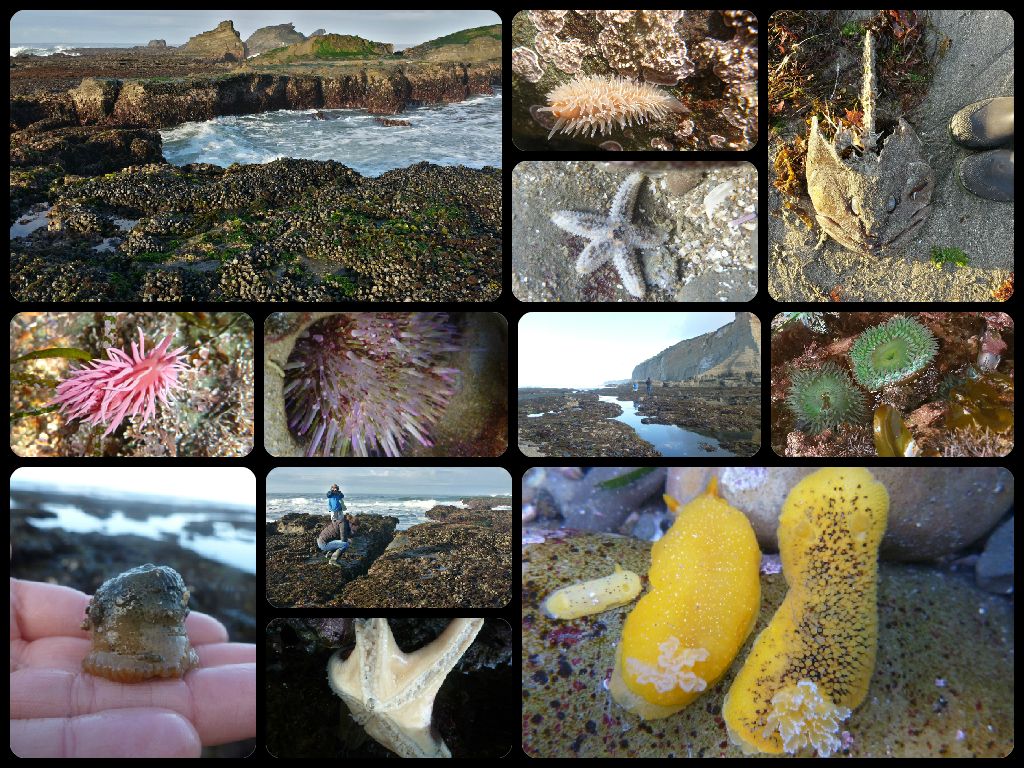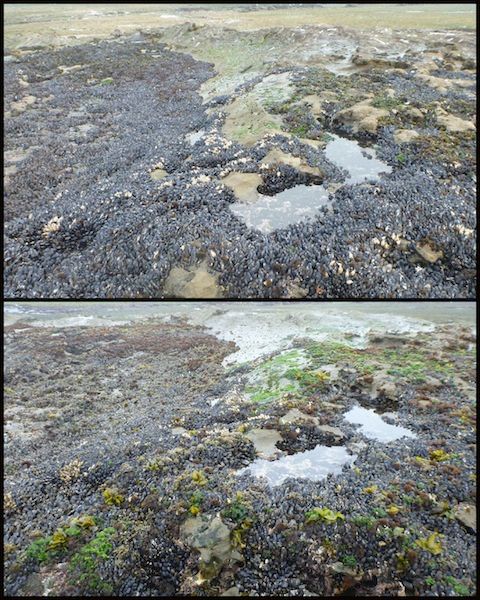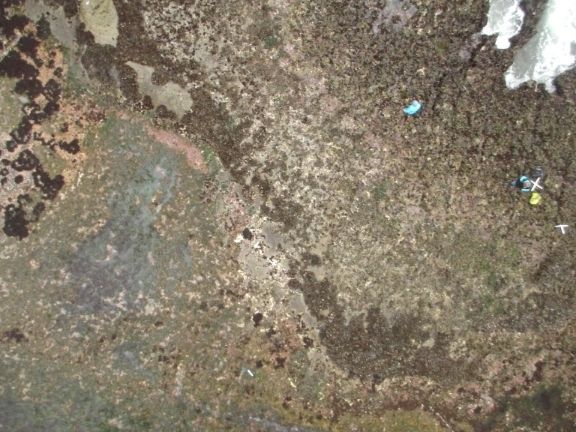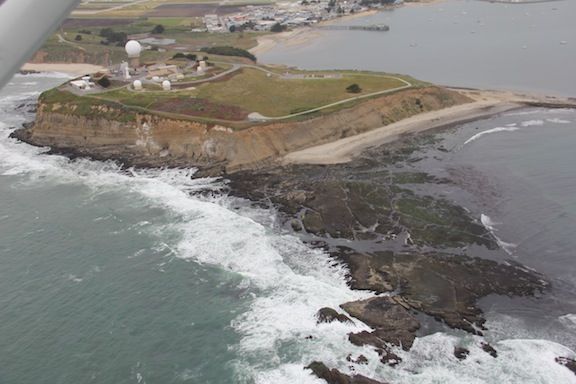April 2015 update
April 8, 2015
Today's field day heralded the return of some upwelling to our coast - seen in the clarity of the water, and certainly felt in the coldness of it as well! We're hoping it continues.
The Hopkin's Rose, Okenia rosacea was still seen in large numbers. Many Hermissenda crassicornis were visible as well - lots of them swimming upside down on the surface-tension of the water.
A handful of larger adult Pisaster ochraceus were out, and we also spotted some tiny juveniles. We're still waiting for Pycnopodia helianthoides, the sunflower star, to return to the intertidal, and we've only seen one pink star, Pisaster brevispinus, over the last year or so - and not very many giant sea stars (Pisaster giganteus) either.
To add to the day's excitement, we found a little Northern elephant seal pup hanging out on the "dog beach" as we were walking back to the parking lot. It didn't seem to be doing so well, so we called the Marine Mammal Center, and got to see part of the rescue. The pup was given the name "Jake," so we should be able to track it on the MMC's patient list.
Since the project's launch in June 2012, our citizen scientists have made over 4000 observations, and have documented more than 400 species, building an impressive baseline species list for Pillar Point!










